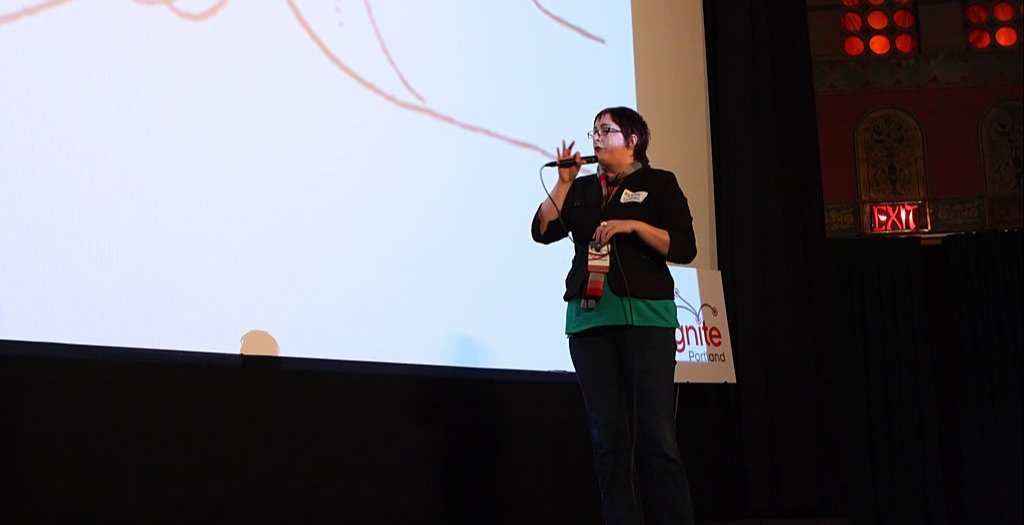
Speaking at a national meeting or conference is about as high stakes as it gets when it comes to presenting. The lights, the big stage, the large audience! To ease nerves and feel prepared, it’s human nature to want to tap into any tool that helps you shine in the big moment. But here’s the rub – some of those tools can become crutches, turning compelling talks into mundane and forgettable experiences.
To save you from that fate, we’ve identified the 3 most common conference crutches and how to avoid them.
CRUTCH 1:
Standing behind the lectern
Just because a lectern is available doesn’t mean you should use it. The lectern puts a physical barrier between you and your audience, making it harder to connect with them. It also makes you a less dynamic speaker by trapping you in one spot, limiting the impact of movement and gestures.
The solution? Use the full stage area, only using the lectern to hold your water or bulleted notes if needed. Worried you’ll have too much nervous energy to do this? Use movement purposefully during your presentation. This could mean planning specific moments to walk across the stage to accentuate a point, or being strong with gestures as opposed to undirected. This will help you get the jitters out while also come across as engaging.
CRUTCH 2:
Being glued to the teleprompter
A teleprompter can be our greatest asset, or our biggest downfall. It becomes a crutch when the teleprompter displays every word of our presentation, making us helpless without it. If we miss a word, or a technical issue occurs, we’re stranded in the middle of our talk with nothing to lean on. Even when teleprompters operate flawlessly, the audience is often snoozing in their seats because the presenter sounds robotic and disengaged from the crowd.
The solution? Make the teleprompter work for you by only including high-level bullets and phrases (that you can also print as a backup). This way you aren’t strapped to the teleprompter but you still have something to guide you through the talk.
CRUTCH 3:
Relying heavily on your slides
Slides should help us tell our story. The problem is presenters often try to make the slides tell the WHOLE story (think lots of text, small fonts and complex graphs). Add dimmed lights in a large ballroom and you have a perfect recipe for conference goers catching quick cat naps.
The solution? Write out your talking points before you ever touch your slides. Then, create visually engaging slides that AID your message (think images, graphs, large fonts). Now you can play the leading role in your presentation with your slides amplifying the most important points.
When you have that opportunity to step onto the big stage, embrace it and toss the crutches aside.
Interested in learning more about 2Connect’s conference coaching services so that no crutches are needed? Click here to learn more.





